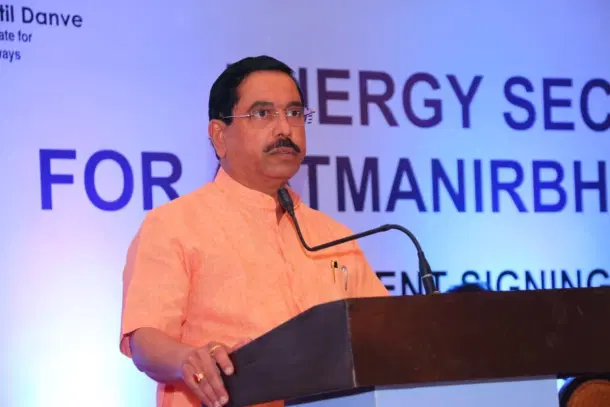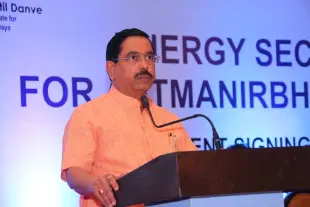News Brief
India Adds 30 GW Renewable Energy Capacity In 2025 So Far, Targets 43 GW By Year-End
Arzoo Yadav
Sep 04, 2025, 03:35 PM | Updated 03:35 PM IST
Save & read from anywhere!
Bookmark stories for easy access on any device or the Swarajya app.


Union Minister for New and Renewable Energy Pralhad Joshi announced on Thursday (4 September) that India has added 30 gigawatts (GW) of renewable energy generation capacity so far in 2025.
He said the country installed about 22 GW of solar and wind power between January and June, and the figure has now reached nearly 30 GW, reported DD News.
“We are optimistic of achieving between 39 GW and 43 GW of new capacity by the end of this calendar year,” Joshi stated at an event.
India remains on track to achieve its long-term target of 500 GW of installed renewable capacity by 2030. The country currently operates 226 GW of renewable capacity.
He said that 67.08 GW of projects have been tendered, while another 186.3 GW are under implementation.
“Together with the capacity already operational, this adds up to nearly 499 GW,” the minister noted.
To strengthen the sector, Joshi said the government is addressing delays in signing power sale agreements (PSAs) and improving weather forecasting to enhance efficiency.
The Power Ministry has also developed a comprehensive transmission plan to integrate 500 GW by 2030, focusing on states rich in renewable resources.
He further announced the plans for launch of the second phase of the PM-KUSUM scheme and the third phase of the Green Energy Corridor project to accelerate clean energy adoption.
HSBC reported that India’s power sector saw strong capacity commissioning in July, adding 2 GW of conventional and 3.2 GW of renewable capacity.
Year-to-date additions in FY26 have reached 21 GW. The report projected 11.7 GW of thermal, 3.8 GW of hydropower, and 36 GW of solar capacity for FY26, alongside power demand growth of 4.4 per cent in August and over 2 per cent in July.
Please click here to add Swarajya as your preferred and trusted news source on Google.
Also Read: India Eyes 10 Per Cent Of Global Green Hydrogen Market As Competition with China Intensifies





